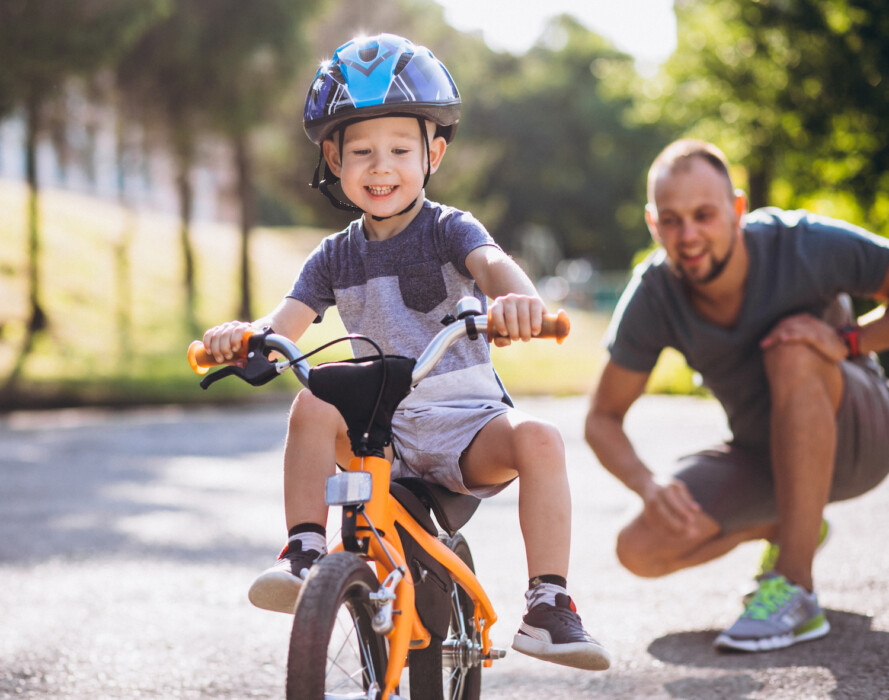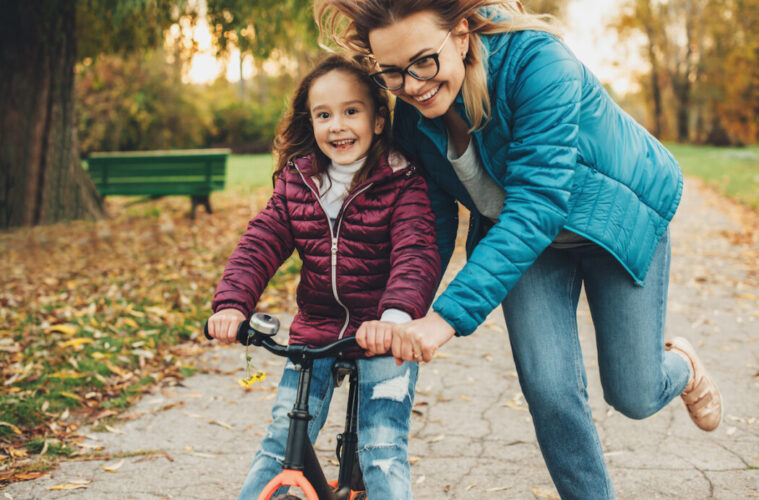In the hopes of highlighting how to best teach a child to cycle, the team at www.islabikes.co.uk – pioneers in designing and engineering quality children’s bicycles – have surveyed 2,200 UK parents of children aged between four and six, who have taught their children to cycle in the past 12 months.
It was initially revealed that over half of the UK parents surveyed (59%) taught their child to ride a bike using stabilisers, while the remainder (41%) chose to teach them without.
When parents were asked how long it took for their youngster to become confident with cycling, those whose children learnt with stabilisers stated that it took two and a half hours, on average. In contrast, those kids who were taught to ride a bike without stabilisers took less than half that time – approximately 47 minutes.
What’s more, the parents who taught their child to ride using stabilisers were also asked if their youngster experienced any issues throughout the learning process, with the most common answers revealed to be:
- Multiple falls – 73%
- Struggled to balance – 69%
- Difficulty with steering – 66%
- Picked up incorrect habits – 47%
- Didn’t make any progression – 16%
To better understand parents’ teaching techniques, participants were also asked to share their stories of when they first taught their child to cycle. Some of the most memorable, or whackiest, accounts included one parent who sat their child on their bike at the top of a hill and let go, with someone else waiting at the bottom to catch them.
Another technique was the commonly-tried parent-holding-on-to-the-saddle and letting go of their youngster without telling them approach; both stories ended in falls.
Furthermore, a few of the most common techniques cited were of parents riding in front of their youngster at first – as long as there were no nearby vehicles or potential hazards – so they understood what they were about to do. Another approach was to start their child off without pedals to help build their child’s confidence at the beginning of their cycling journey.
To help dispel any misconceptions around the use of stabilisers, the team at Islabikes have also highlighted the main reasons why parents should go without when teaching their child to cycle:
- A bike steers by leaning and stabilisers prevent this by putting the rider’s weight on the outer most wheel – leaning them in the opposite direction to which they’re turning
- If you teach your child to ride with stabilisers, they’ll find it harder to balance when they’re eventually taken off, meaning they’ll need to ‘relearn’ how to ride a bike
- Stabilisers tends to put off the point when your child learns to ride (when the stabilisers are removed) and cause them to pick up incorrect habits that need to be unlearned

Tim Goodall, Managing Director at www.islabikes.co.uk, commented, “When it comes to teaching your child how to ride for the first time, it should take around 45 minutes; sometimes it’s even quicker. Ideally, they will have learnt to balance on a balance bike over the last 12 months or so.
“When they are on their first pedal bike, pick somewhere open and flat but preferably not grass because this can make it harder to gain enough momentum to balance. Also, set the saddle so your child can comfortably reach the ground with the balls of both feet, hold them under their arms – not by the handlebars – and let the bike move freely.
“You’ll get a feel for how much they are depending on your support, and as this reduces, you can loosen your grip under their arms until they are riding unassisted!”


